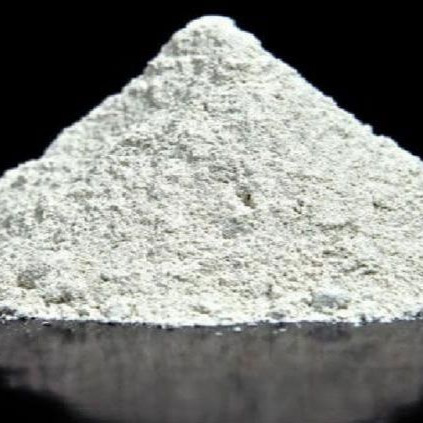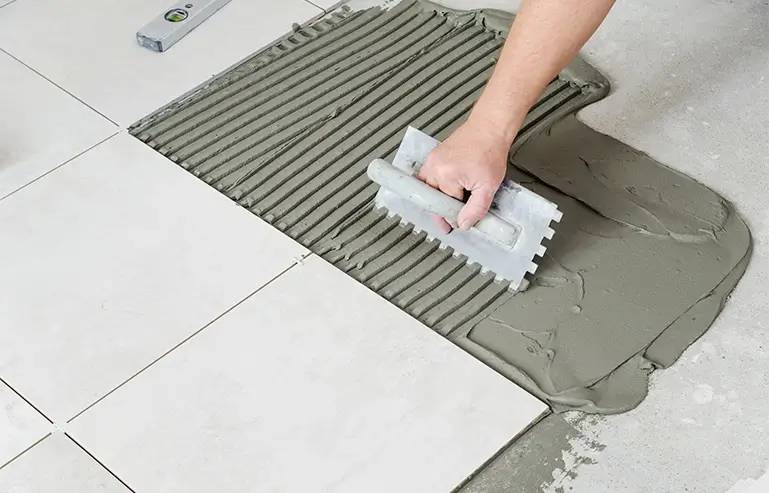Steps to make powder tile adhesive mortar
To prepare powdered tile adhesive mortar, follow these steps:
1. Mixing powder and water:
- Mix every 20 to 25 kg of powder with 6 to 8 liters of water.
- Stir well with a mixer until no lumps remain in the mortar.
2. Mortar rest:
- After mixing, let the mortar rest for 10 minutes.
3. Stir again:
- After resting, stir the mortar well again.
4. Time required for action:
- The mortar takes 20 minutes to work.
5. Duration of mortar use:
- The prepared mortar should be used within 1 to 2 hours at most.

It is recommended that the preparation and use of powder tile adhesive be done in the temperature range of 5 to 40 degrees Celsius above zero to have the best quality and efficiency. It should be noted that tile adhesive is also temperature stable in the temperature range of minus 20 to 70 degrees Celsius above zero.
In standard mode, the consumption rate per square meter is about 3 to 4 kilograms.
Conditions for using powder tile adhesive
- Make sure the work surface is flat and level. Also, check the depth to which the tile adhesive should be applied.
- Make sure that the surface on which you are going to apply tile adhesive is dry and free of any grease, dust, or dirt.
- If there is any dirt, asphalt, tar, or any other unevenness on the surface of the paper, remove it. This surface preparation is generally done with a primer.
- If the adhesive mortar has expired and the tile adhesive has dried, never mix it with water.
- The appropriate temperature for using tile adhesive is 40°C.

How to apply powder tile adhesive
There are four known techniques for applying powdered tile adhesive: the thin-layer technique, the medium-layer technique, the thick-layer technique, and the solid-bed technique.
Thin layer
This technique actually applies tile adhesive with a thickness of 2 to 5 mm. To do this, first pour the tile adhesive mortar on the area and create a layer with a thickness of 2 to 5 mm with a notched trowel. It is important to note that the lines of the notches must be parallel to each other. Then place the tile on the mortar. The direction of the tiles should be such that the parallel lines of the mortar are across the tiles. After placing the tile on the mortar, release the air trapped in the mortar by gently rotating the tile over the mortar. This technique is used for tiling walls that have low humidity.
Middle layer
This technique requires a mortar thickness of between 5 and 15 mm, which is applied in the same way as the thin layer, only a different notched trowel and a larger amount of mortar are used.
Thick layer
Thick layer is the oldest technique used on stone and tile on various surfaces. This technique is slightly different from the two thin and medium layer methods. We cover the back of the tile with mortar with a thickness of between 15 and 30 mm. And we slightly moisten the place where it is placed and then we place the tile in its place. And we harden and air it with hammer blows. This method is mostly used for large non-natural stones and large tiles and porcelain.
Solid substrate
The solid substrate technique is very important for tiling places such as industrial environments, swimming pools, balconies, etc. with tile adhesive to achieve higher resistance.
We must note that when applying powder tile adhesive, we must follow all the steps and conditions mentioned step by step. Disruption in any of the above, including time, amount of ingredients, adhesive application substrate, etc., will reduce the quality of work and the life of the adhesive.


